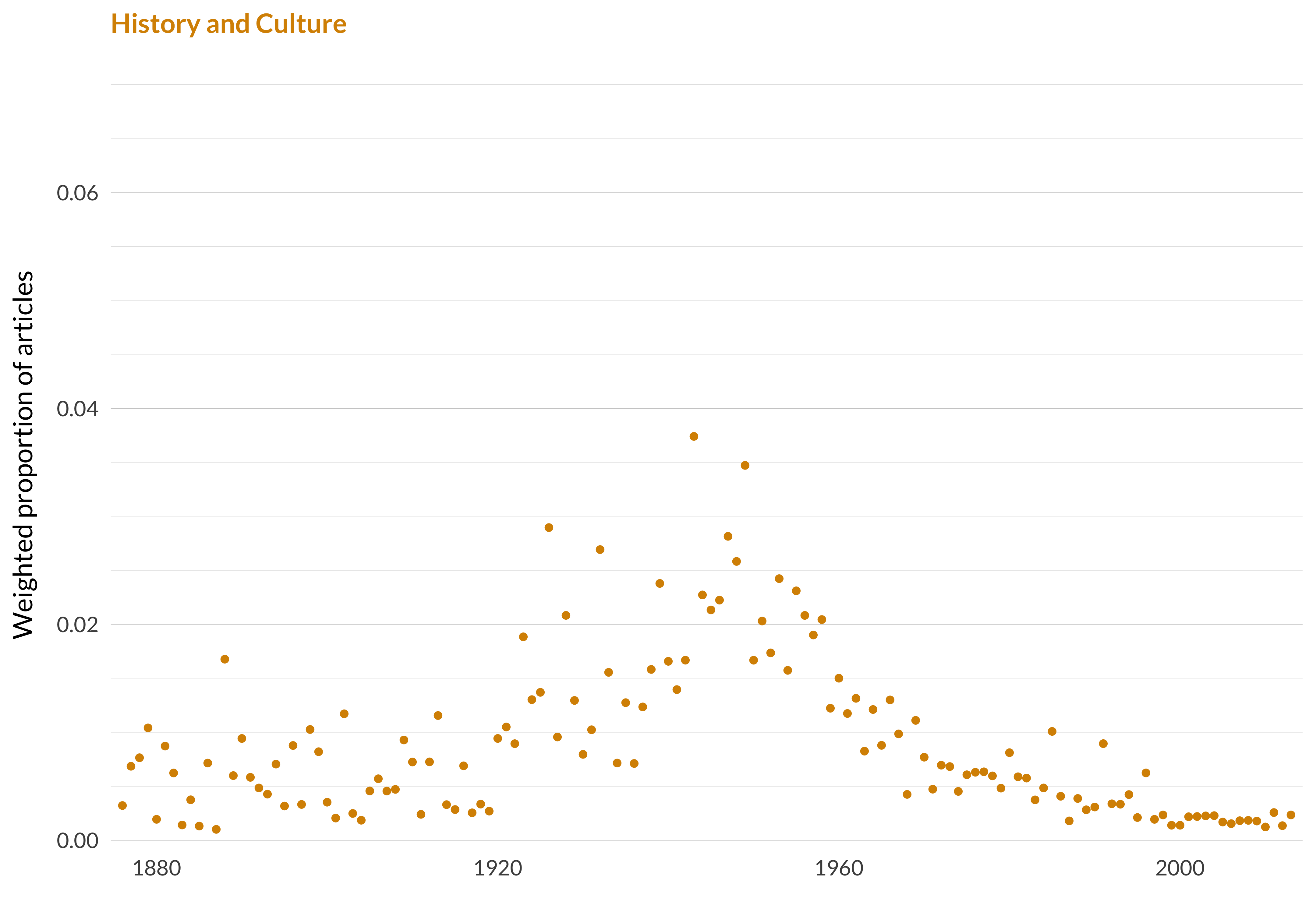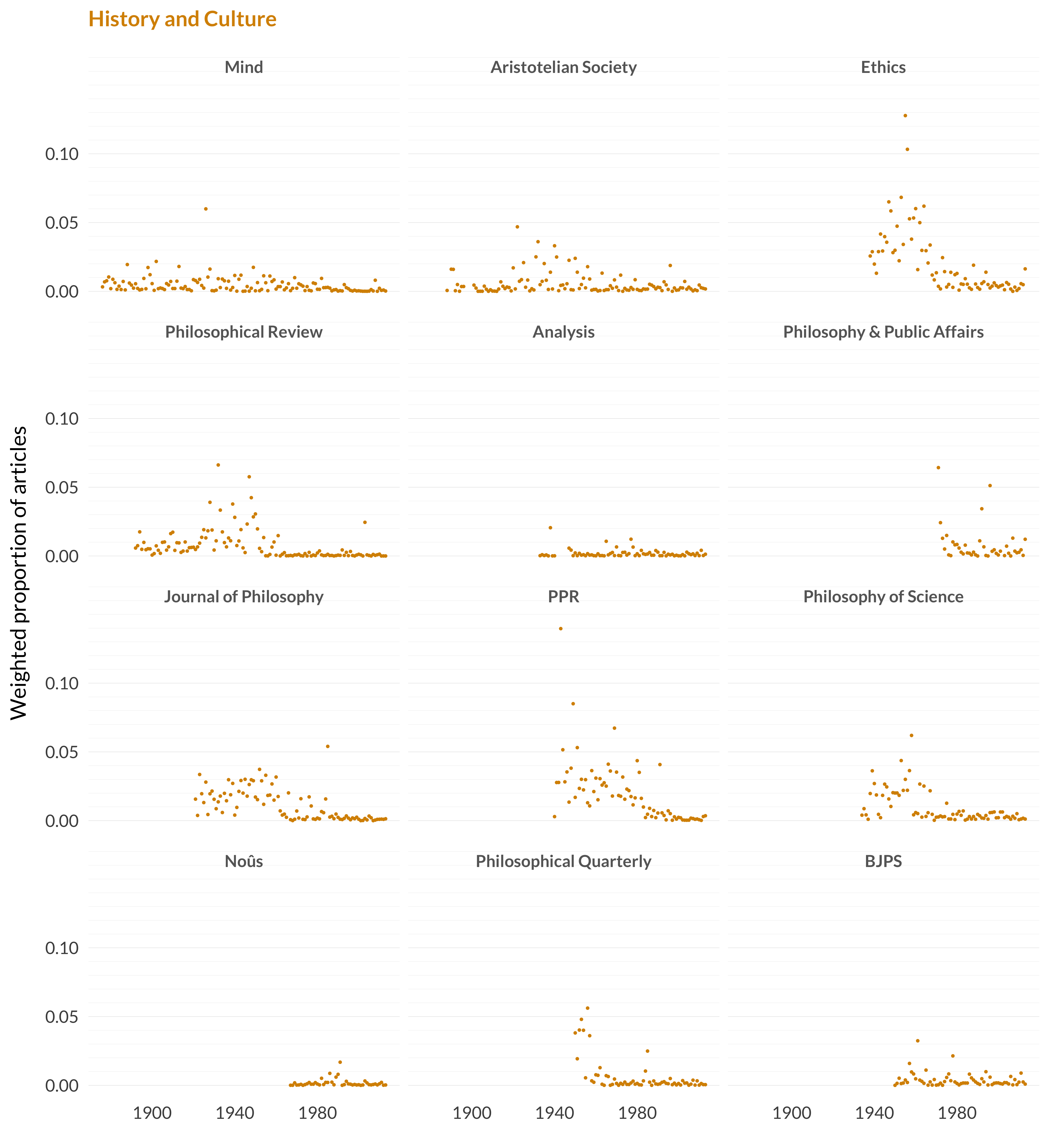2.10 History and Culture
Category: Social and Political
Keywords: historian, historians, hegel, historical, cultures, civilization, western, culture, dialectical, cultural, dialectic, history, myth, revolution, german
Number of Articles: 342
Percentage of Total: 1.1%
Rank: 42nd
Weighted Number of Articles: 280.8
Percentage of Total: 0.9%
Rank: 55th
Mean Publication Year: 1955.8
Weighted Mean Publication Year: 1956
Median Publication Year: 1954
Modal Publication Year: 1949
Topic with Most Overlap: Life and Value (0.0515)
Topic this Overlaps Most With: Other History (0.0324)
Topic with Least Overlap: Formal Epistemology (0.00021)
Topic this Overlaps Least With: Sets and Grue (0.00044)

Figure 2.31: History and culture.

Figure 2.32: History and culture articles in each journal.
Comments
This is a topic that I find quite interesting but which has largely vanished from contemporary philosophy. Arthur Hatto’s paper on revolutions (1949) was one of the papers I was most pleased about finding from doing this project, but it’s something it’s hard to imagine getting published in the last fifty years.
The topic is largely philosophy of history, with quite a bit of attention paid to Collingwood and Toynbee. But there is also work at the intersection between philosophy and sociology and, more generally, work discussing culture. There is a smattering of work here that would be called history of philosophy, such as the paper seen above on Vico, but there is much more work about history as a discipline than history of philosophy.
There are also a handful of papers on the philosophical significance of various political figures, such as Jefferson, Lenin, or Roosevelt. Analytical political philosophy has something of an aversion to dealing with figures who were politically influential in their own time. Even when studying such figures, there is tendency to steer away from the works that actually made them influential. There are ongoing attempts to make Anglophone political philosophers take Ghandi and Martin Luther King Jr. more seriously. If those attempts succeed, they will not just increase the racial diversity of who gets studied but also introduce figures who were seriously influential in their own lifetime.